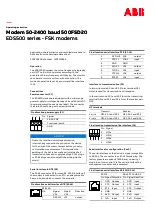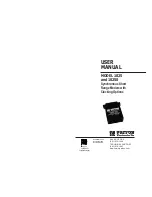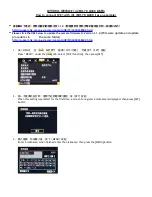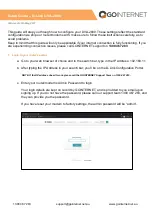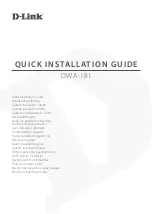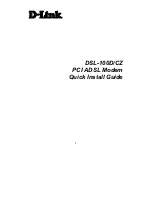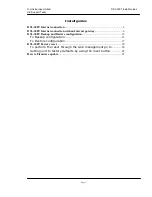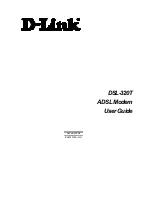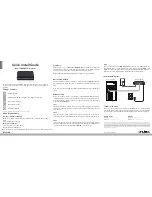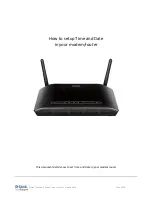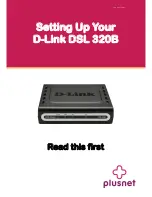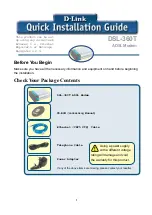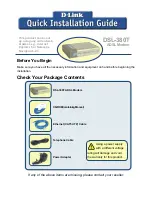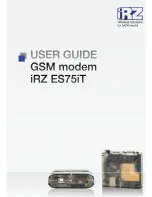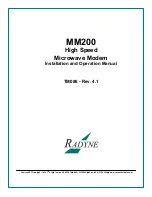
5.1.4.2 Reading The Test
A. If line quality is good, “Error” LED on local modem will not light
and “CD” LED will be red. On remote modem “Error” LED will not light
and “CD” LED will light green.
B. If flat cable is used or parts of the line are flat cable, “Error” LED
on local modem will light red and “CD” LED will light green. On remote
modem “Error” LED will not light and “CD” LED will light green.
C. If one wire from the 4 wire twisted pair is broken “Error” LED will
light red and “CD” LED will light green on at least one modem.
Note: We cannot guarantee accurate detection if small pieces of flat
cable are present in the line beyond 1500ft of the local modem.
5.2 ANTI-STREAMING ERROR INDICATOR
When not in test mode (green “Test” LED is off), the front panel
“Error” LED is used to indicate a streaming error. When the Model
1080A Series’ anti-streaming circuitry is enabled, the RTS signal from
the DTE is timer controlled. The timer begins to count when the DTE
raises RTS. If the time period that RTS remains high exceeds the
preset time out period, the anti-stream circuit will force RTS low. The
“Error” LED will light red, indicating a streaming condition (RTS
continually on). This feature prevents a malfunctioning terminal from
tying-up a computer port in a multi-drop or polling environment. When
the DTE drops RTS, the anti-streaming timer is automatically reset and
the front panel “Error” LED turns off. The time out period is DIP switch
selectable for 12.5 or 50 seconds.
5.3 POWER-UP
Apply AC power to the Model 1080A Series by plugging the
separate AC power adapter first into the rear panel of the Model
1080A/1080A-64, and then into an acceptable AC power outlet. There
is no power switch on the Model 1080A/1080A-64; and the
remote/normal/loopback switch should be set to “normal”. When the
local and remote Model 1080A/1080A-64s are
both powered up, and
passing data
normally, the following LED conditions will exist:
• TD & RD = flashing red and green
• RTS & DCD = green
• TEST = off
21
5.4 V.54 TEST MODES
The Model Series offers two V.54 test modes to evaluate the
condition of the modems and the communication link. These tests can
be activated physically from the front panel, or via the RS-232 interface.
Note: V.54 test modes are available for point-to-point applications only.
5.4.1 Local Analog Loopback (LAL)
The Local Analog Loopback (LAL) test checks the operation of the
local Model 1080A Series unit, and is performed separately on each
unit. Any data sent to the local Model 1080A or 1080A-64 in this test
mode will be echoed (returned) back to the user device. For example,
characters typed on the keyboard of a terminal will appear on the
terminal screen. To perform a LAL test, follow these steps:
A. Activate LAL. This may be done in one of two ways: First, by
moving the front panel toggle switch DOWN to "Local". Second, by
raising pin 18 on the RS-232 interface (Note: Make sure DIP switch
S2-6 is OFF, and DIP switch S3-5 is ON). Once LAL is activated, the
Model 1080A Series’ transmit output is connected to its own receiver.
The "test" LED should be lit.
B. Verify that the data terminal equipment is operating properly and
can be used for a test. If a fault is indicated, call a technician or replace
the unit.
C. Perform a BER (bit error rate) test on each unit. If the BER test
equipment indicates no faults, but the data terminal indicates a fault,
follow the manufacturer's checkout procedures for the data terminal.
Also, check the RS-232 interface cable between the terminal and the
Model 1080A/1080A-64.
5.4.2 Remote Digital Loopback (RDL)
The Remote Digital Loopback (RDL) test checks the performance of
both the local and remote Model 1080A/1080A-64s,
and the
communication link between them. Any characters sent to the remote
1080A or 1080A-64 in this test mode will be returned back to the
originating device. For example, characters typed on the keyboard of
the local terminal will appear on the local terminal screen
after having
been passed to the remote Model 1080A/1080A-64 and looped back.
To perform an RDL test, follow these steps:
22
















